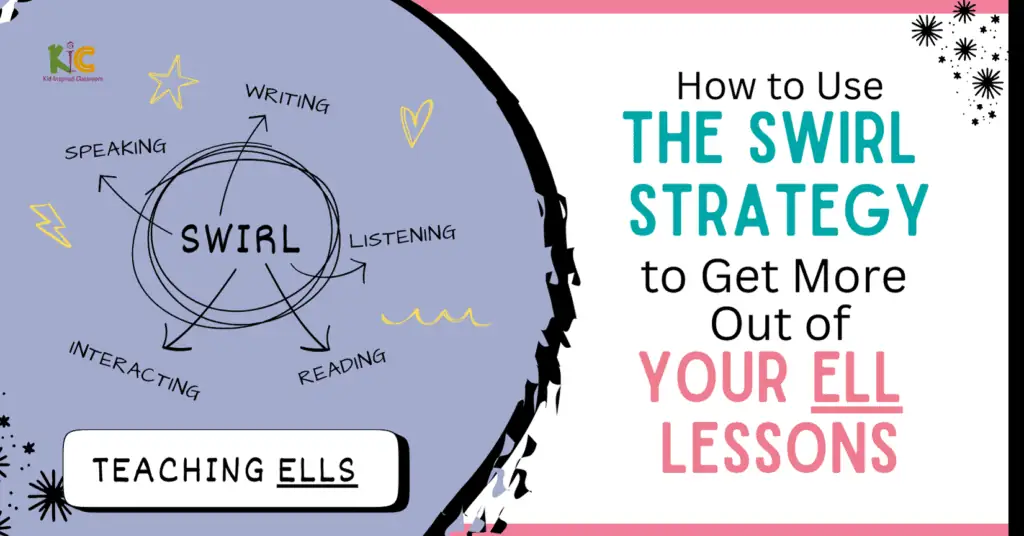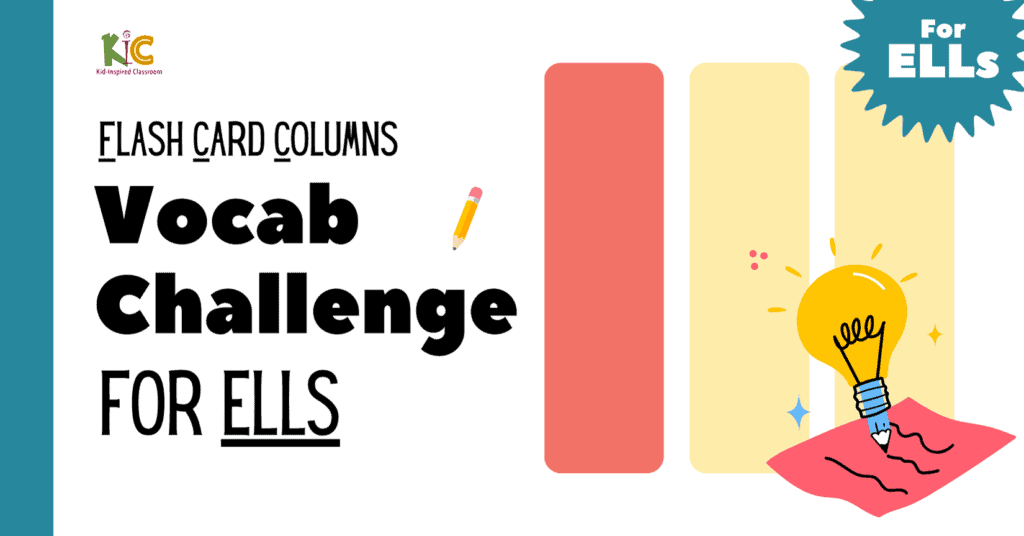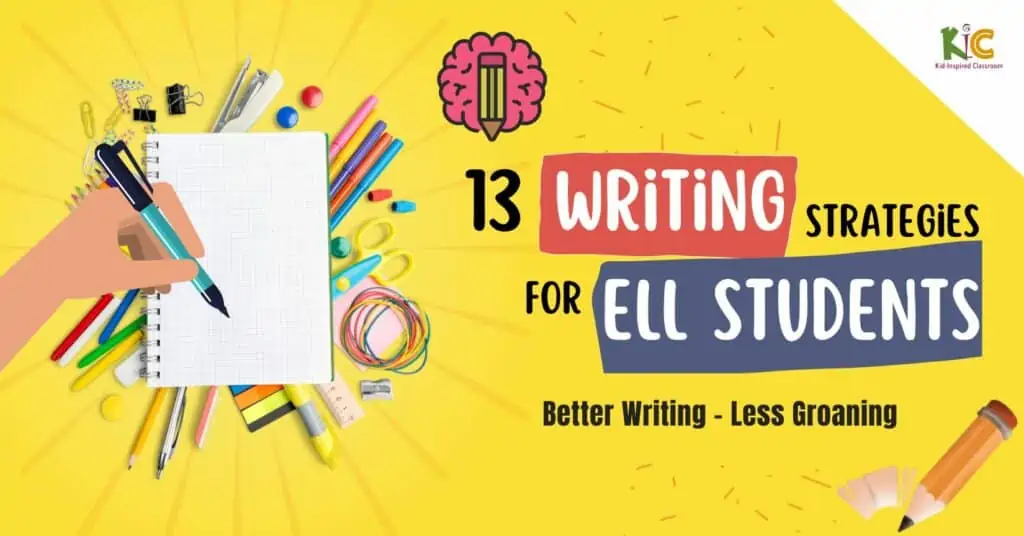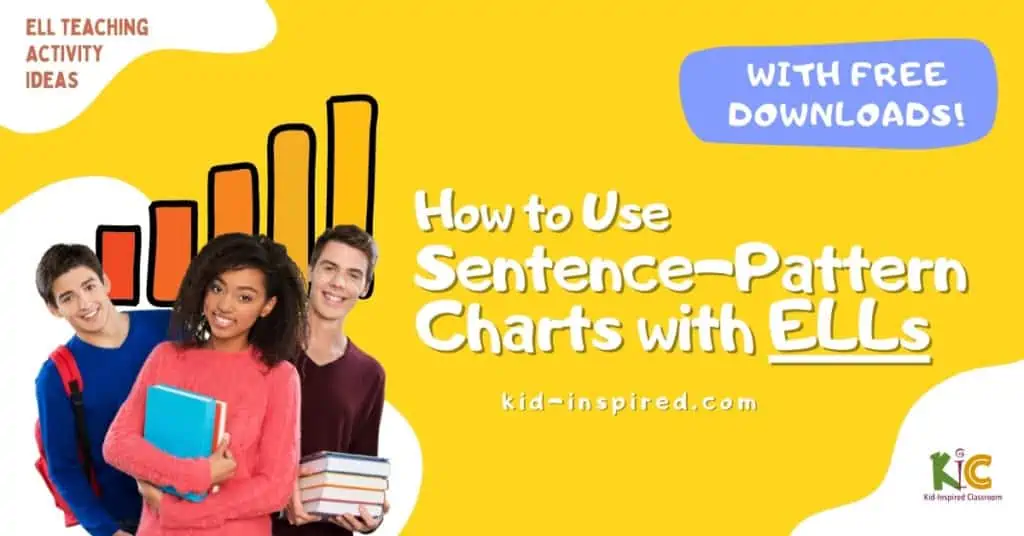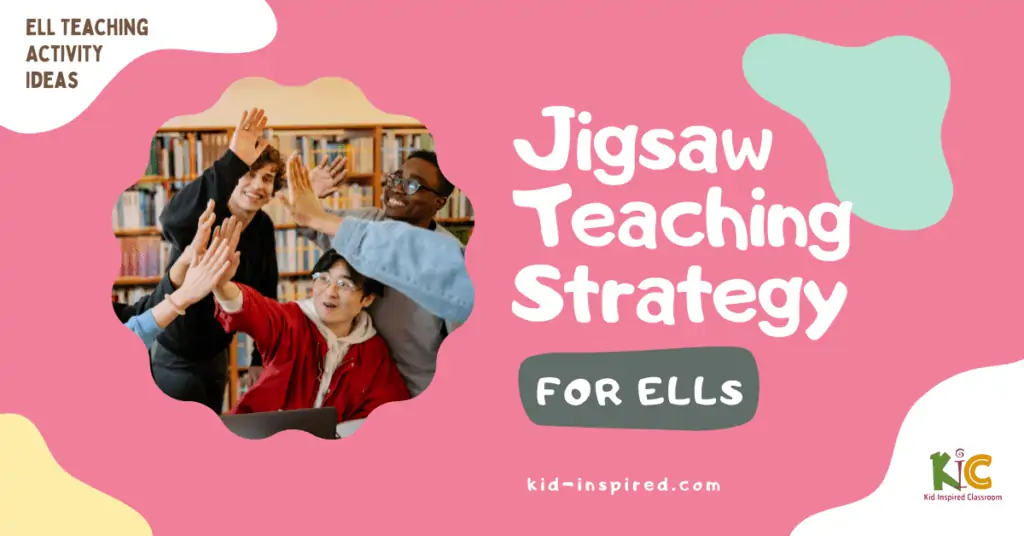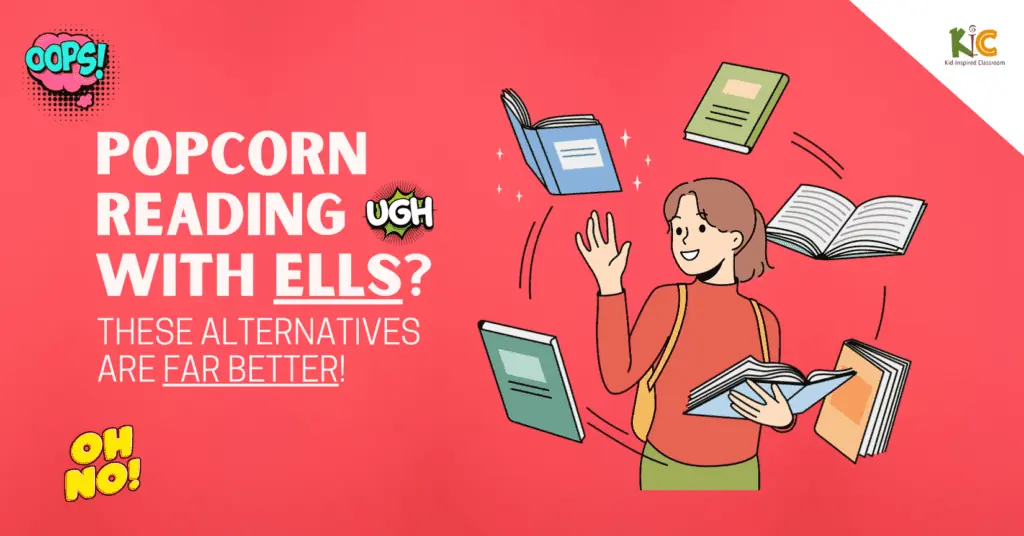
Duration: 5-10 minutes
Type: Group/Partner
Popcorn reading is a popular activity, but it is also a huge waste of time that can actually cause problems. Most students are just waiting around and those who struggle with reading are put under a great deal of unneeded pressure.
In this article, you’ll find some wonderful alternatives that lead to far better results from your ELLs!
Read Alouds, one of the activities listed below, is an activity that comes recommended by some heavyweights in the English Language teaching world: Larry Ferlazzo and Tonya Ward Singer and Valentina Gonzalez. You can read a really good article on reading aloud to ELs by Valentina on her website here.
Let’s jump right in!
“…doing round-robin reading or popcorn reading, where individual students are called on to read aloud for the class without any prior practice, is an ineffective practice that can be harmful to students. We never recommend having students do these “cold reads” because, as studies have shown, it can lead to embarrassment and frustration for the student who is called on to read. It also does not provide an engaging or valuable learning experience for the other students in the class.”
Larry Ferlazzo, The ESL / ELL Teacher’s Survival Guide
Alternative ESL Reading Activities
Read Alouds: The teacher reads to the students, modeling good reading behavior like:
- Prosody: Reading with good pitch, emphasis and timing to really bring out the meaning of a text. Try the Tonya Ward Singer “I do it, we do it, you do it” method. Model it while the students listen, then have them read it together with you. Finally, have them do it with a partner while you go around and listen.
- Context Clues: Model reading a text and thinking through what to do when you come to a word you don’t know. “Hmm, I don’t know that word. What is the sentence before and after talking about? What prefixes or suffixes does it have? Maybe it means… Let me keep reading and see if that makes sense.” You can annotate the text if appropriate as you model.
- Comprehension: Model reading a passage and processing what the text is saying as you read, connecting it to background knowledge or asking questions. “Hmm, I wonder if…? Oh, I have done that before. I hate it when that happens. I don’t understand that part. I should go back and read it again.”
Close Reading: Read a passage through 3 times, each time with a different objective. With a longer passage, you may want to read aloud to your students parts of the passage and then use a close reading strategy for a shorter section of the passage.
- 1st Reading: Find sight words and phonics combinations – You can color these with colored pencils. The goal of this reading is to be able to first sound out the words correctly.
- 2nd Reading: Identify and define words and grammar you don’t know. You can annotate the text by writing off to the sides in the margins. If you are using a book you can’t write in, you can make a photocopy of the passage. The goal of this reading is to understand the words and sentence structures used.
- 3rd Reading: Read to understand the text and answer comprehension questions about it.
- You can read more about this strategy as well as grab some free fluency readers here.
Ear to Ear Reading: In this activity, students read in small groups of 2 or 3 students. Students sit next to each other but face opposite directions so that they are reading to each other with their mouths closer to each other’s ears. You can also add challenges with this activity. Read more about Ear to Ear Reading here ->
Beat Your Own Time: In this fun activity, students get in small groups of 2-3 students. Each person takes a turn reading a short passage or part of a longer passage while another student times them. They then write down their time and the next student reads while they are timed. After everyone has gone once, the students attempt to beat their own time during a second reading of the passage. Read more about Beat Your Own Time here ->
Reading Differentiation with ELLs: You can also check out this great strategy for differentiating for students at different proficiency levels. 4 Quick Steps to Differentiate for Reading Comprehension with ELLs ->
Benefits:
- Research shows that metacognitive strategies like those listed for the Read Alouds help students make significant gains in their reading ability. The more you model these behaviors and have students practice them, the more students are likely to use the strategies when they need them.
- The process of modeling for everyone and then having students try it with a partner keeps everyone involved. Popcorn reading where students “cold” read a text is at best an inefficient use of time, and at worst, a detriment to students who already struggle.
What are your favorite alternatives to Popcorn Reading? Leave me a comment below!
